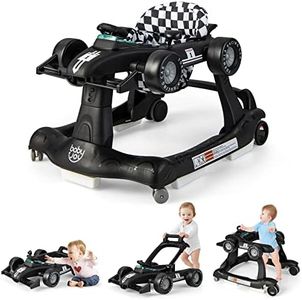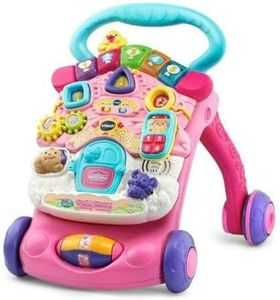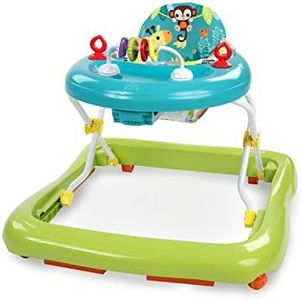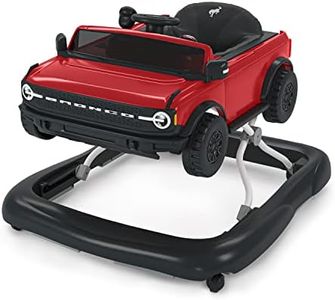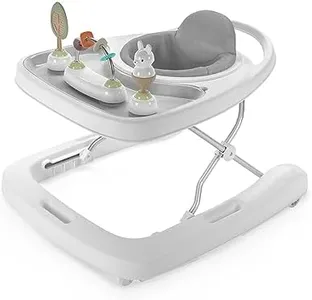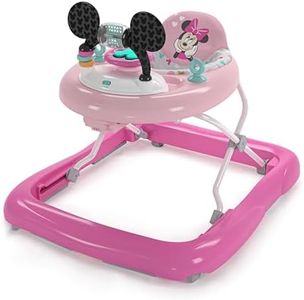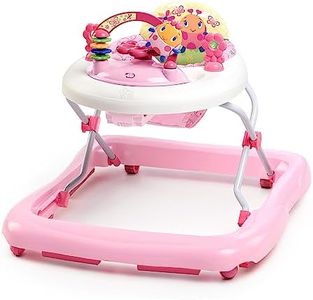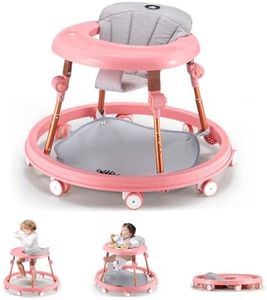We Use CookiesWe use cookies to enhance the security, performance,
functionality and for analytical and promotional activities. By continuing to browse this site you
are agreeing to our privacy policy
10 Best Infant Walkers
From leading brands and best sellers available on the web.Buying Guide for the Best Infant Walkers
Choosing the right infant walker can make a big difference for both you and your baby. The main purpose of a walker is to support your baby's movement as they explore the world on their feet. However, it's important to consider aspects such as safety, comfort, adjustability, and entertainment features. Thinking about where and how you'll use the walker, as well as your baby's current development stage, can help lead you to the best choice.Safety FeaturesSafety is the most essential factor in any infant walker. This refers to things like a wide, stable base, anti-slip pads, and brakes or friction strips that help prevent the walker from tipping over or moving too fast. Some walkers also come with built-in mechanisms to keep your baby from reaching dangerous places like stairs. When evaluating safety, look for models with a sturdy structure and extra security measures, especially if you have a curious or active baby. Your home environment—such as the presence of steps or uneven floors—should guide your focus on specific safety features.
AdjustabilityAdjustability usually means the height of the walker and sometimes the seat position can be changed as your baby grows. A walker with height adjustments ensures your baby can use it comfortably over time without straining to touch the floor or sitting too low. Typically, walkers offer two or three height positions. If your baby is smaller or taller than average, or if you want the walker to grow with them, opt for one with a wider range of adjustments.
Comfort and SupportThis spec relates to the quality and padding of the seat, the backrest support, and the materials used. A well-padded, supportive seat helps keep your baby comfortable during use and reduces the risk of chafing or discomfort. Some walkers have ergonomic designs or added back support, ideal for babies spending longer periods in them. When choosing, think about how long your baby might use the walker at a time and consider seats that are cushioned and easy to clean.
Portability and StoragePortability and storage refer to how easy the walker is to move from place to place or to store when not in use. Some walkers are foldable or lightweight, making them convenient if space is tight or if you want to travel with the walker. If you live in a small apartment or plan to bring the walker to grandparents’ or friends’ houses, a foldable and portable design would be helpful.
Entertainment FeaturesMany walkers include built-in toys, music, rattles, or interactive trays to keep your baby engaged while using the product. These features can help in the development of motor skills and keep the baby entertained for longer stretches. Some walkers offer very simple designs, while others come packed with colorful toys and sound elements. Choose based on your baby's interest level and your preference for quiet versus stimulating play.
Ease of CleaningBabies can be messy, so how easy it is to clean the walker matters. This typically means removable, washable seat covers and wipeable plastic trays. If your baby is prone to spills or is in the teething stage, an easy-to-clean design will make your life much easier and keep the walker hygienic.
Weight and Floor CompatibilityThis refers to the walker’s own weight and how well it moves on different types of flooring, like carpet, hardwood, or tiles. Lighter walkers are easier for babies to maneuver but might move too quickly for younger or less steady children. Heavier walkers provide more stability but may be harder to push, especially on thick carpets. Consider your home’s flooring and your baby’s strength when picking the right balance.
